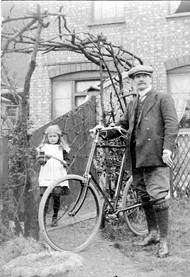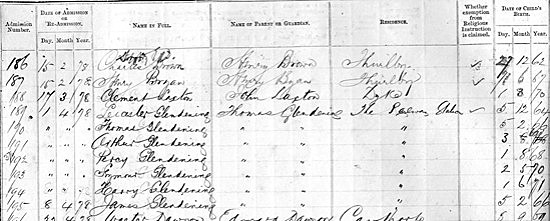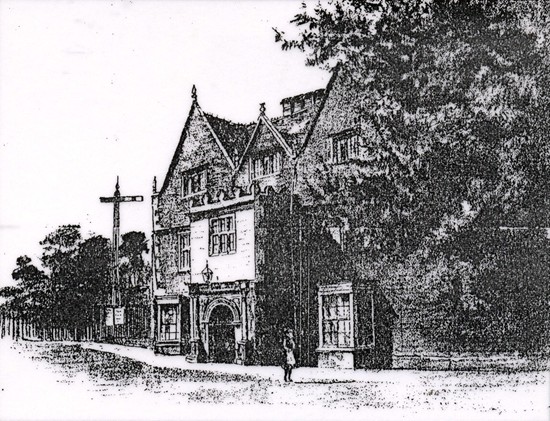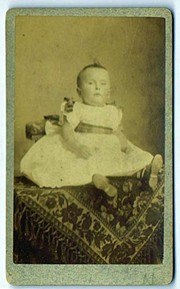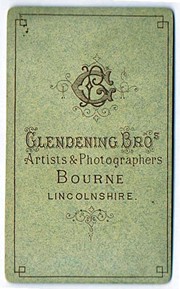|
Thomas Glendening 1838-1899 Thomas Montague Glendening (1838-1899) was the oldest of three brothers born to James and Sarah Glendening at Hampton-on-Thames, near London, and after school went to work on the railways, winning gradual promotion and in 1878, he was appointed stationmaster at Bourne where he served for 14 years. At this time, the Red Hall was used as the railway booking office with accommodation for the station master and his family and so he lived during this period at one of the grandest houses in the town where he was highly regarded. He left in May 1892 for a similar post at Muswell Hill and later Alexandra Palace in London, and his departure was marked with the presentation of a purse containing subscriptions from the nobility and leading inhabitants in appreciation of his work as station master, together with a handsome hall clock surmounted with a barometer and thermometer from station employees. The presentations were made by the vicar, the Rev Hugh Mansfield, who referred to the efficient manner in which Mr Glendening has discharged his duties and said that it was a noteworthy fact that during his entire service at Bourne, there had been no collision or accident. Soon after retiring, he died at his home in Muswell Hill on 16th February 1899 at the age of 63. He had been an amateur but talented artist and critics of his work suggested that he might have won fame in that quarter had he pursued painting as a career. His widow, Mrs Emma Glendening, died on 14th December 1923 at Porlock Road, Bush Hill Park, North London, at the age of 86. Mr Glendening's younger brother was Alfred Augustus Glendening (1840-1910), an artist of some note who exhibited at the Royal Academy in 1865 and whose paintings sold well commercially, several surviving in private ownership. Thomas Glendening married twice. His first wife, Martha, died in 1858 and on 21st June 1860 he married Emma Sarah Lemmey and between them his two wives appear to have presented him with thirteen children, four girls and nine boys. The girls are unknown but the boys were: Montague Bayly (1861), Frederick Thomas (1863), Leicester James (1864), Thomas and James (twins, 1866), Percy Lemmey (1867), Arthur Channing (1869), Seymour (1870) and Henry Cheveley (1872).
The effects of Robert Mason Mills which were sold by public auction after his death in 1904, included a painting of the Red Hall in Bourne, one of the only recorded examples of A C Glendening's work. It was one of 140 oil paintings and engravings amassed by Mills and it fetched the highest price of ten guineas (worth £626 at today's values). No other paintings appear to have survived although it would seem possible that there may be others that languish unknown and unidentified in houses around Bourne and in North London. His painting of the Red Hall, however, was copied in 1891, probably by Glendening himself because he did have a reputation as a lithographic artist, to accompany a memorial or petition drawn up and signed by 76 leading businessmen, traders and residents, in an attempt to save the building which was then under threat of demolition to make way for extensions to the railway system. The petition was successful and so the Red Hall was reprieved and continued in use as the railway station booking office.
See also The Red Hall petition Return to The Red Hall
Go to: Main Index Villages Index |
||||||||||||||||||||
